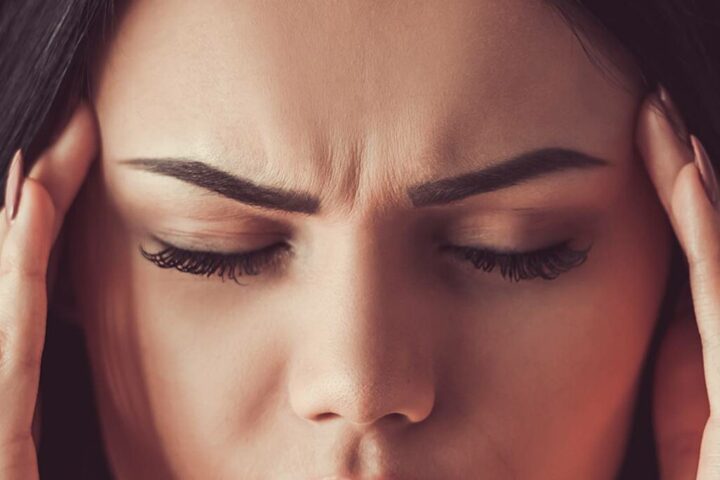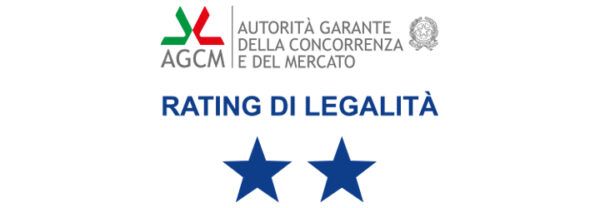Headache is a pain located inside the head or in the upper area of the neck.
It is possible to identify three categories:
- Primary headaches
- Secondary headaches: these are practically the symptoms of other conditions
- Cranial neuralgia, facial pain and other headaches: these are pains that occur as a result of inflammation of the cranial or cervical nerves
Primary headaches are conditions that are not always possible to determine the trigger, also because often there is not only one.
In many cases they are the consequence of a genetic predisposition associated with trigger factors and internal causes of the body.
Almost always they are linked to an unbalanced lifestyle, hormonal reactions or environmental factors.
Primary headaches are the most common type of headache.
The most well-known are tension headache, migraine and cluster headache.
Tension headache, also known in the past as a muscle tension headache, is by far the most common form of headache.
Here the headache originates in the area of the nape, temples or forehead.
It manifests as a persistent pain in the nape following the continuous and involuntary contraction of the muscles of the neck and shoulders.
In the milder forms it is usually linked to situations of stress, anxiety or depression, but often it also affects people with a poor sitting posture.
Furthermore, it has been noted that women are mainly affected.
Depending on the number of episodes, this type of headache can be classified as infrequent (less than 1 episode per month), frequent, or chronic (more than 15 days per month).
The duration of each episode is also very variable and may last for hours, days, or even months and years in the case of chronic tension headache.
Another common form of primary headache is migraine, also known as vasomotor headache.
In particular, it affects women but in some cases even children.
The pain is more intense than with a tension headache and reoccurs with a frequency that varies from individual to individual.
The causes are still unknown, but the risk factors include hormonal imbalances, some foods such as cheeses and chocolate, environmental causes, smoking, alcohol and lack of sleep.
Some of the symptoms of this type of headache are nausea, vomiting, photophobia, phonophobia and osmophobia (sensitivity to light, sounds and odours respectively).
A cluster headache (sometimes known as cluster migraine) is the most severe but less prevalent headache.
It is a piercing headache that manifests itself with an intense and excruciating pain on one side of the head, with frequent and close attacks.
Unlike migraine, a cluster headache is not associated with nausea and vomiting, but other symptoms such as eye watering, lowering of the eyelid, rhinorrhea and nasal congestion.
As a result, it is normal for this headache to be accompanied by a discomfort in the eyes.
Unlike other forms of headache that predominantly affect women, cluster headaches mainly affect men and smokers.
Once again in this case the causes are not clear, but there are some risk factors such as jet lag, stress, changes in sleep patterns, smoking and alcohol abuse.
Another form of headache is ophthalmic.
Its main characteristic is that of being accompanied by visual and neurological problems.
Moreover, it has been observed that this condition is favoured by the presence of visual defects such as myopia or astigmatism and that the majority of people affected are women under 40.
In the following paragraphs we will look in more detail at the causes and symptoms of ophthalmic headache.
A more rare type is a stabbing headache, characterised by widespread pain and a short duration.
Diagnosis
Both in the case of migraine, and in tension and cluster headaches, diagnosis begins with the patient’s description of the symptoms.
In particular, the case history includes information on the site, intensity, frequency and duration of pain, how it forms and if associated with episodes of nausea, vomiting, photophobia and phonophobia.
With migraine, the doctor investigates the causes also through a physical examination. This includes measuring blood pressure and heart rate, examining the cervical muscles and the temporomandibular joint and also checking for the presence of respiratory abnormalities, fever, nausea and vomiting.
In all cases, it is useful for the patient to undergo diagnostic tests in order to rule out other causes of headaches and the presence of more serious conditions.
These include:
- Computed tomography (CT), a radiology examination which, thanks to a computerised technique, manages to reconstruct the content of the head
- Magnetic resonance imaging (MRI), an even more precise examination than the CT but based on magnetic fields
- CTA and MRA, which, albeit similar to the CT and MRI, show selected arteries and veins of the brain
- Lumbar puncture (also called spinal tap), an invasive examination that allows the extraction of a very small amount of cephalic-rachidial fluid
- Electroencephalogram (EEG) (especially in childhood), which detects the normal electrical activity of the brain
- Blood tests
- Vertebral column x-ray
Symptoms
Let us now look at the symptoms associated with headache, distinguishing between its different forms.
Symptoms of muscle tension headache occur with mild or moderate but persistent pain.
This type of constant headache originates in the frontal region or in the occipital region, or that of the nape, and extends to the entire head.
A strong headache, on the other hand, is one of the symptoms of migraine.
This is characterised by recurrent headaches and in some cases very frequent, sometimes every day.
These constant headaches may be accompanied by nausea and vomiting, as well as by photophobia (i.e. sensitivity to light).
Head pain encountered with cluster headaches, on the other hand, is concentrated on only one side of the head but is very intense and throbbing.
Symptoms of ophthalmic headaches are mainly related to vision:
- Photophobia
- Increase in eye watering
- Seeing spots
- Partial and temporary loss of sight
All these symptoms are reversible and occur for a few minutes (usually no more than half an hour).
Causes
The causes of headache depend on its form.
Tension headaches can be linked to stress, anxiety and depression, as well as to incorrect posture.
The causes of migraine, however, are still unknown, but the disorder has neurovascular origins.
Certain risk factors include hormonal imbalances, certain foods such as cheese and chocolate, but also smoking, alcohol intake and lack of sleep.
The causes behind cluster headaches are also not well understood.
Some risk factors include jet lag, stress, changes in sleep patterns, smoking and alcohol abuse.
On the other hand, with regard to ophthalmic headaches, the causes may be genetic, vascular or linked to vision disorders already present in the individual.
Physical therapy involves the execution of physiotherapy exercises for the treatment and rehabilitation of the hand, hip, knee, foot and limbs in general.
Therapies
Per ogni tipologia di mal di testa è possibile distinguere tra terapia preventiva e terapia sintomatica.
PREVENTIVE THERAPY
In the case of tension headaches, preventive therapy mainly involves ensuring the rhythms of sleep and wakefulness are followed, avoiding all situations that may create anxiety or stress and that regular physical activity is carried out, avoiding excessive efforts.
To prevent migraines it is possible to take medication, even on a daily basis, such as antidepressants, antiepileptics and those traditionally used to treat hypertension.
Some studies claim that vitamin B12 and magnesium can also help prevent migraines, but scientific evidence is still limited.
Likewise, in the case of cluster headaches, it is possible to take preventive medication, but it is always necessary to rely on your doctor for the prescription, since they can cause side effects.
SYMPTOMATIC THERAPY
Analgesic drugs, such as paracetamol, and non-steroidal anti-inflammatory drugs (NSAIDs) such as ibuprofen are usually given to combat episodes of tension headaches and migraines. However, opioids and barbiturates are not recommended due to their possible side effects.
It is important to reduce the pharmacological treatment during pregnancy and lactation.
With subjects who suffer from cluster headaches, painkillers are not effective because the attacks may finish before the medication takes effect.
As a result, they are usually prescribed medication that can act in the first 10 minutes, or the subjects can wear a mask to inhale pure oxygen for about 15 minutes.
If you found this article useful, why not share it with your family, friends or colleagues?







